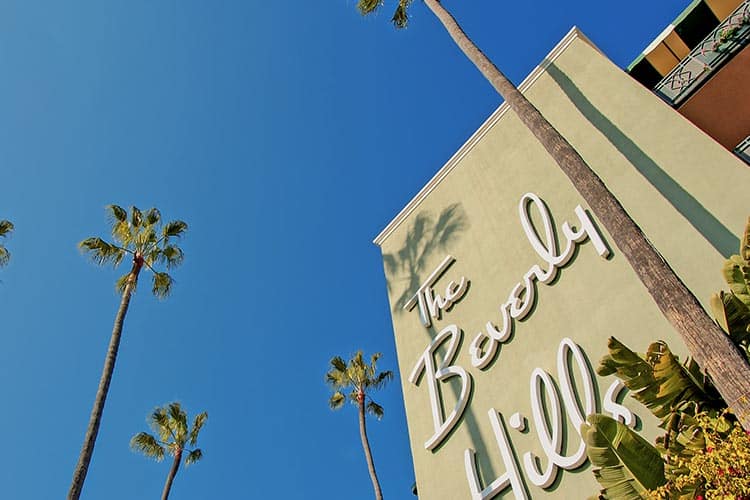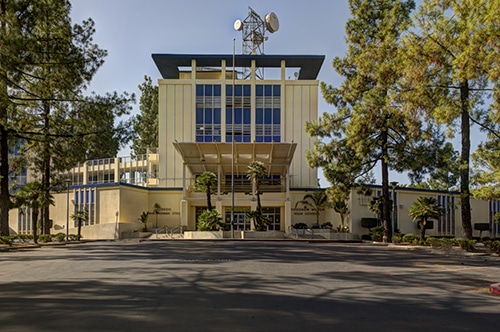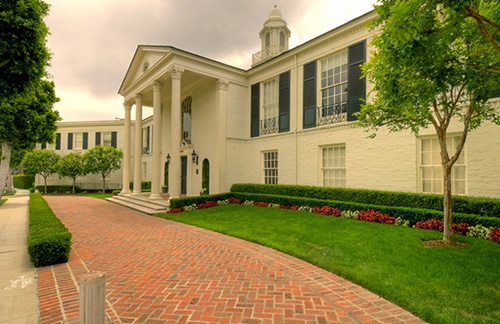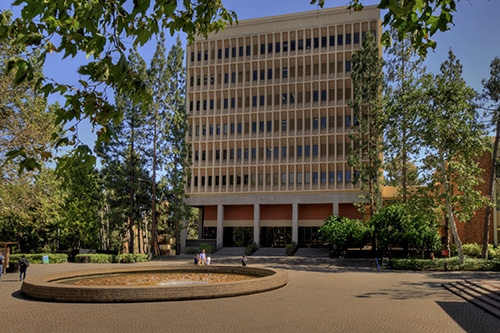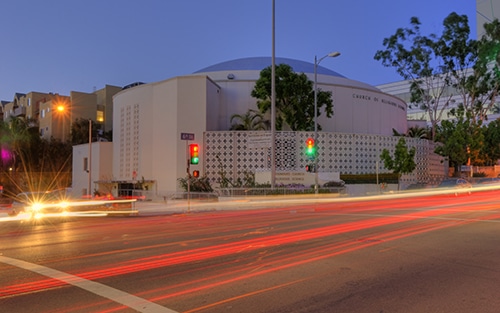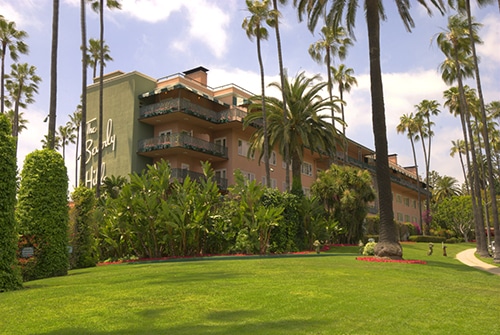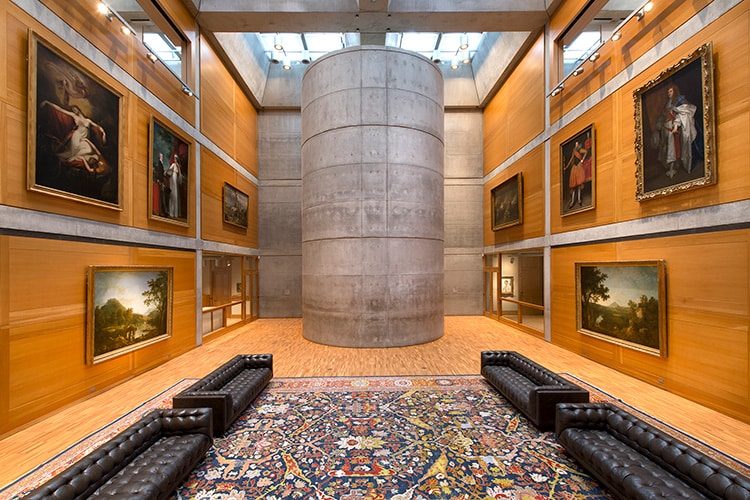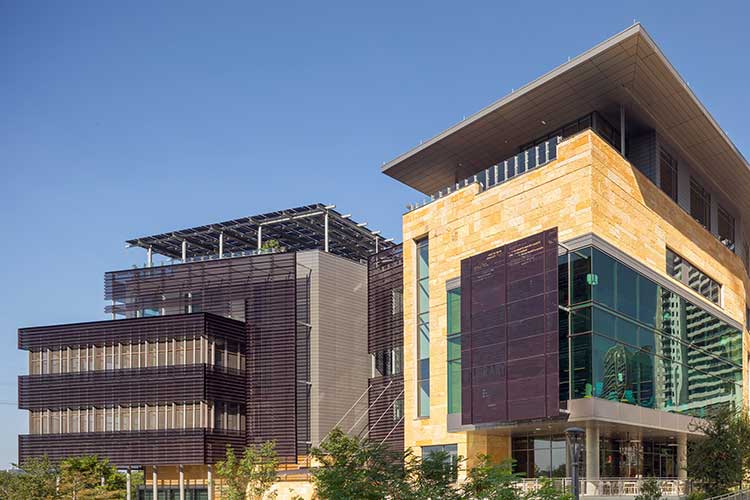Los Angeles’ architectural scene is known for many things—the fantastic sights of the TCL Chinese Theater and the Venice Canals, the daring metal swoops of the Disney Concert Hall. In a city known for experimentation and artistic whimsy, architecture and design are used to create a landscape of dreams.
But what many casual observers don’t know is that Los Angeles has a storied history of Black architects. From 1914 on, Black architects and designers have been involved in some of the most significant aesthetic decisions that defined the look of the city.
Here are a few of Los Angeles’ most historic and storied Black architects:
Paul Revere Williams: “The Grandfather of Los Angeles Architecture”
Born: 1894
Death: 1980
Notable Style: Historic Revival
Well-Known Buildings:
- Golden State Mutual Life
- First AME Church
Starting his career in 1914, architect Paul R. Williams embodied a fearless determination to pursue his architectural dreams against all odds.
“There was a famous story that his high school advisor advised him to find something else to do, because the Black community in Southern California was only 3% of the population,” said Dr. Leslie Luebbers, museum director at The University of Memphis and project director for the Paul R. Williams Project, an initiative of the Memphis chapter of the American Institute of Architects to commemorate and celebrate Williams’ legacy. “He was told that there just wouldn’t be enough business for him, and that white people wouldn’t go to him. And he decided to ignore that completely.”
Williams designed Woodrow Wilson High School with an eye for accessibility and student comfort. Williams was influenced by classical Georgian design in this project for the Music Corporation of America. Williams designed the steel and concrete structure of Franz Hall for UCLA’s Psychology Department. Williams planned the circular structure of the Founders Church building to serve as a symbol of unity. Williams redesigned and updated much of the historic Beverly Hills Hotel, including the iconic Palm Court Terrace.
It’s a good thing for Angelinos that he did. Williams went on to become one of the most influential designers of his generation, in a career that lasted until the 1970s. “He was active in the political environment, too,” Luebbers said. “At the age of 25 or 26, he was appointed to the first Los Angeles planning committee, and he was very strategic. He knew that that would lead to his being involved with the expansion of Los Angeles.”
Overall, Luebbers said, “His approach to architecture was one that was exemplary, and I think that’s a large degree of why architects—not just black architects but other architects—are influenced by him.”
James H. Garrott: “The Apprentice Becomes the Master”
Born: 1897
Death: 1991
Notable Style: Avant-garde, Modernist
Well-Known Buildings:
- St. Philip’s Episcopal Church
- Loyola Village Branch Library
James H. Garrott was the second licensed black architect west of the Mississippi, following Williams’ licensing in 1922.
“Clearly Williams was his North Star,” said Dr. Melvin L. Mitchell, author of “The Crisis of the African-American Architect.” “Garrott most probably worked for Williams between 1920 and 1928 but seems to have maintained a professional distance after that point. My guess is that Garrott was searching for his own path and identity and found it a decade later in 1938 when he met Gregory Ain.”
Under Ain’s tutelage, Garrott became immersed in a modernist approach to architecture inspired by left-wing politics.
“Garrott—through his professional association and social relationship with Ain—was probably the only unconditionally and exclusively modernist black architect in the nation besides Hilyard Robinson,” Mitchell said. “He’s a personal hero of mine for his stance on not just the aesthetics of modernism but their modernist sio-political convictions.”
“I just regret that Garrott was apparently not as interested in developing a big practice or big projects as was Williams and Robinson,” Mitchell continued. “Garrott clearly had the technical skills and design talent to have done so. But he made other choices.” Although he didn’t complete as many projects as Williams, Garrott’s bold style has left a lasting impact on Los Angeles’ aesthetic.
Ralph Vaughn and Norma Merrick Sklarek: “The Young Turks”
Born: Vaughn: 1907; Sklarek, 1926
Death: Vaughn, 2000; Sklarek, 2012
Notable Style: Vaughn, Mid-Century Modern; Sklarek, Pop Modern
Well-Known Buildings:
Vaughn:
- Chase Knolls Apartments
- Schwab’s Pharmacy on Sunset Boulevard
Sklarek:
- Pacific Design Center
- Mall of America
One of the many young architects who got their early practical training with the legendary Paul R. Williams, Ralph Vaughn helped pioneer the distinctive California Modern style that characterized much of Los Angeles’ emerging architecture landscape in the 1940s. He also worked as a remarkable set designer.
“Ralph Vaughn was one of the Young Turks—African-American architects after World War II,” said Dreck Spurlock Wilson, the editor and contributing author of “African-American Architects: A Biographical Dictionary, 1865–1945.” “As designers, they were progressive. They were much more flexible in their approach and not wedded as closely to the classical architecture. And they were all of the similar mindset of that casual California style. That carried them to kind of throw off some of the traditional constraints that the older African American architects were educated and practiced in.”
Moving to Los Angeles a little after Vaughn’s hay day, Norma Merrick Sklarek was the first Black woman to become licensed in California.
“Sklarek was with Ralph Vaughn in that second generation of architects and designers,” Wilson said. “She had a really marvelous eye for a very kind of sleek and straight and almost shiny design aesthetic,” creating distinctive structures such as embassies, county government buildings and even the eye-catching Pacific Design Center, which remains an architectural landmark in contemporary Los Angeles. Overcoming barriers of race and gender, Sklarek’s style shaped the sensibilities of a generation of designers.
Robert Kennard: Mentorship and Community
Born: 1920
Death: 1995
Notable Style: Mid-Century Modern
Well-Known Buildings:
- City of Carson City Hall and Community Center
- Metro Purple Line Wilshire/Normandie Station
Robert Kennard was a groundbreaking residential architect who was known not just for his work but for his mentorship. Overcoming considerable personal struggles as a young apprentice, where he was paid half the rate of his white contemporaries, Kennard made mentorship and community the center of his practice. He devoted considerable time to speaking in classrooms throughout Los Angeles and encouraging the work of young architects of color.
Gail Kennard, Robert’s daughter and the chief architect at KDG Architects, the firm he established during his lifetime, believes that, to some extent, the city of Los Angeles was the key to her father’s success.
“It’s not coincidental that Los Angeles produced both Paul Williams, my father and so many other prominent African-American architects,” Kennard said. “I think LA’s just kind of been a wide-open place for people in all different professions. There was something about the city that wasn’t staid and formal and institutionalized. People were not as rigid about giving opportunities to people that might not have gotten opportunities in other places, where they had more establishment. Los Angeles was kind of wide open.”




